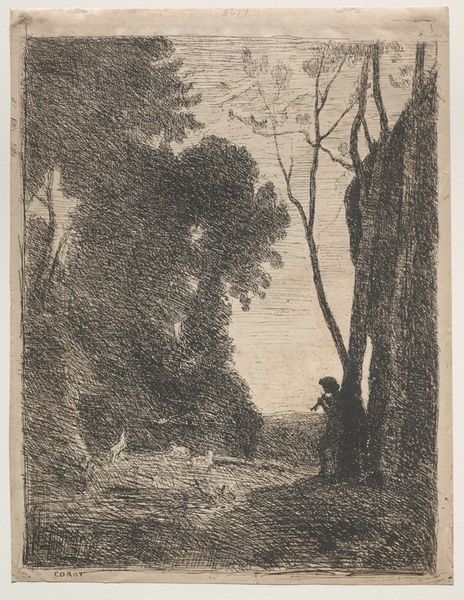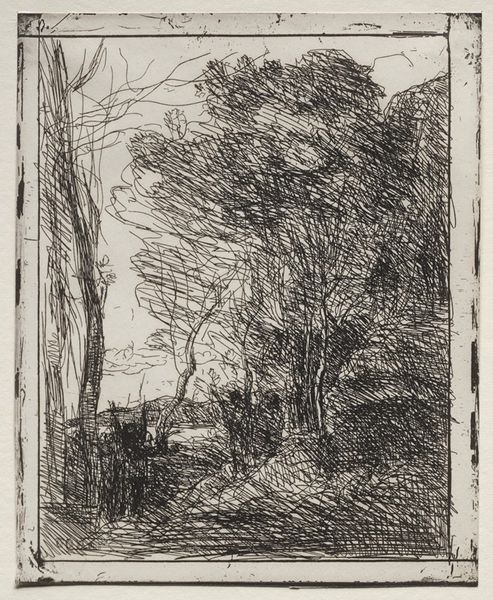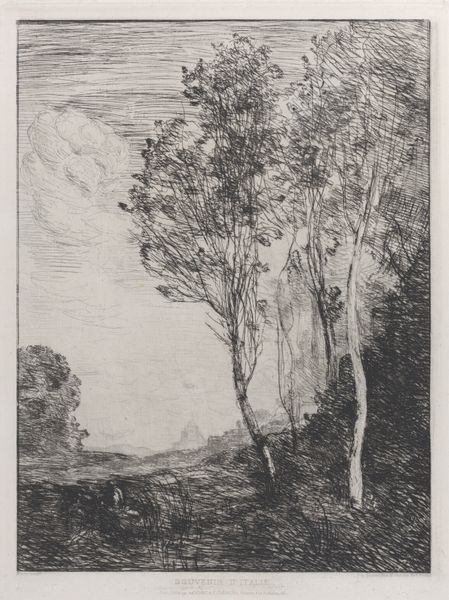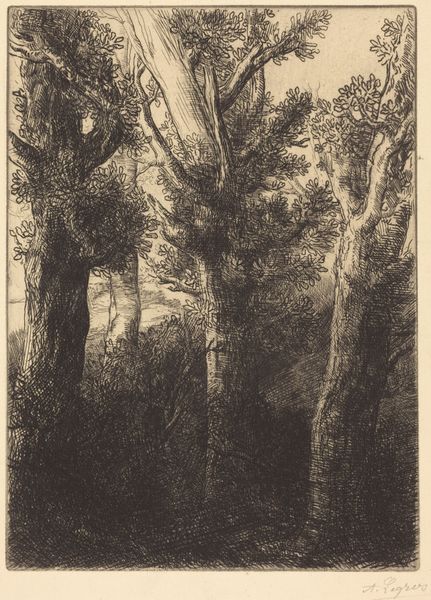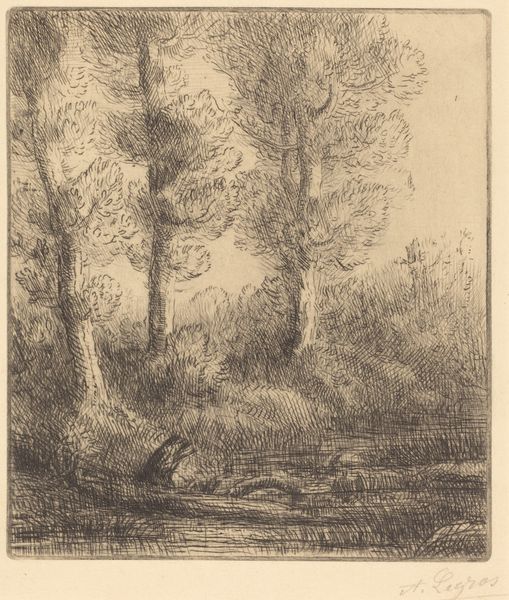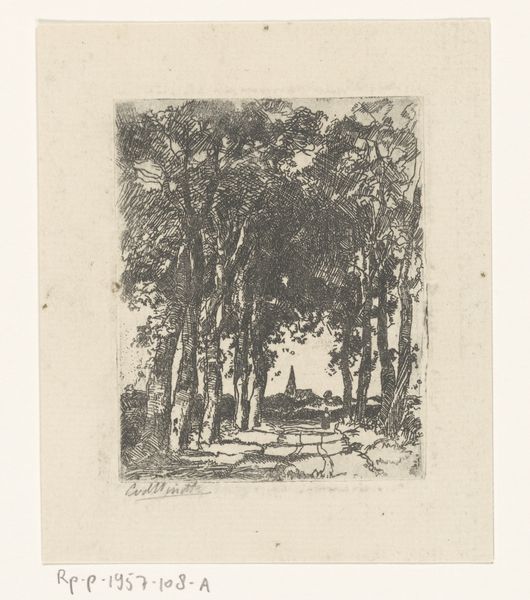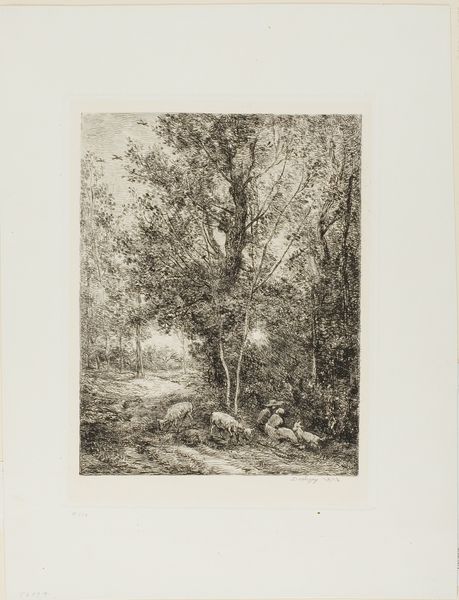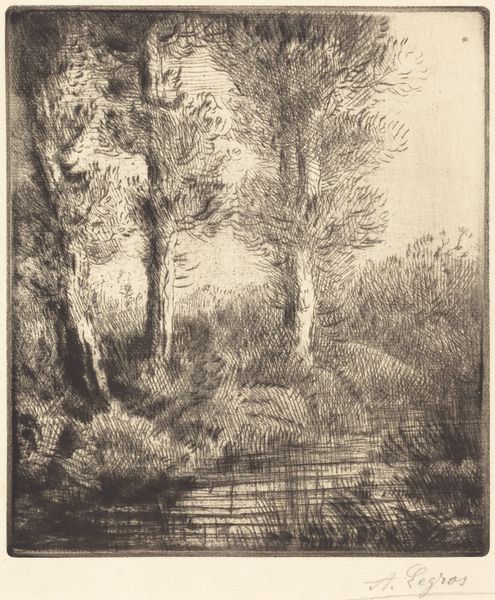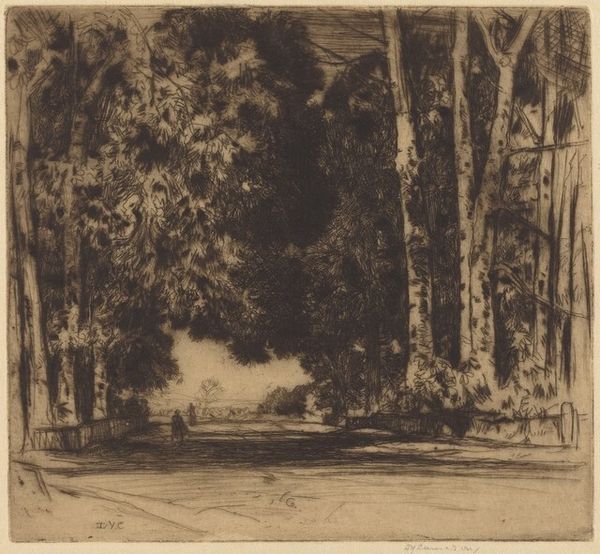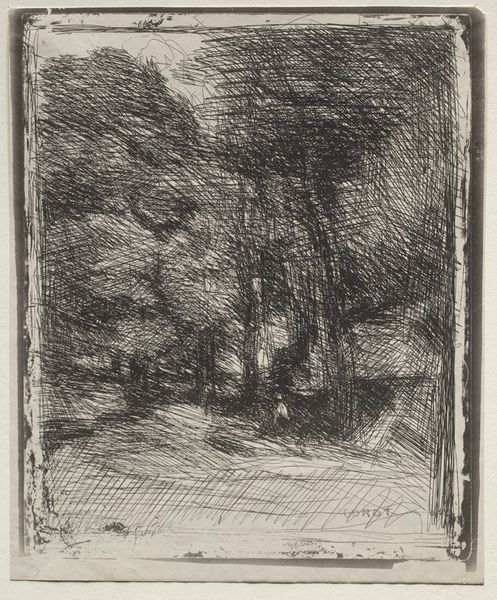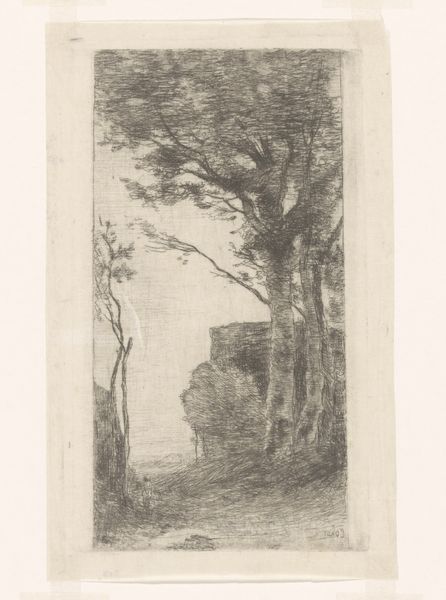
Dimensions: 324 × 247 mm (image); 362 × 287 mm (sheet)
Copyright: Public Domain
Camille Corot made this etching, titled 'The Young Shepherd, first plate', using metal, acid, and paper. The etched line is, in effect, a drawing made by acid. Corot would have covered a metal plate with a waxy, acid-resistant ground, then scratched his image into that surface. When dipped in acid, the exposed metal would be eaten away, leaving an incised drawing. This plate is then inked and printed, transferring the image to paper. Notice how this indirect process affects the image. Corot coaxes tones from the landscape through the density of his marks. Areas of shadow are created by hatching lines in multiple directions; lighter areas by more spare marks. The resulting image, which is dependent on chemistry and labor, has an atmospheric quality that is characteristic of Corot's landscapes. Etching, a cousin to the then-emerging technology of photography, allowed artists to more easily reproduce and distribute their work, connecting it to wider networks of labor, politics, and consumption.
Comments
No comments
Be the first to comment and join the conversation on the ultimate creative platform.
